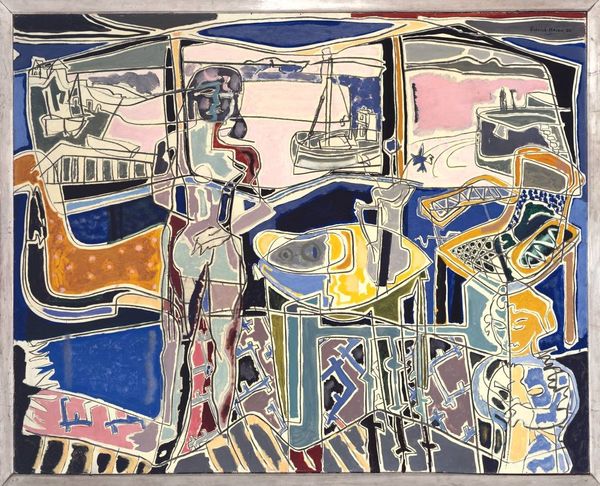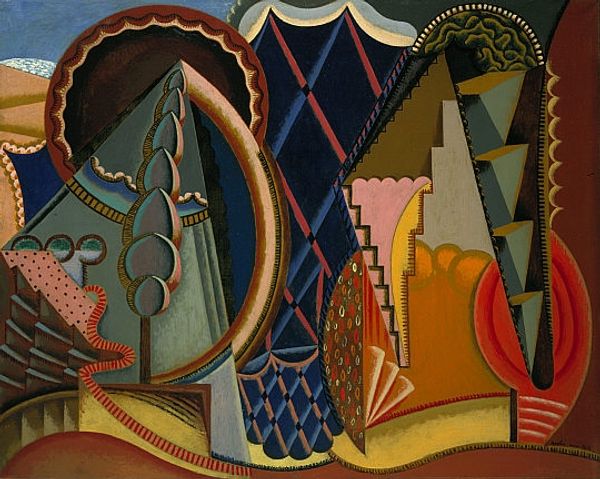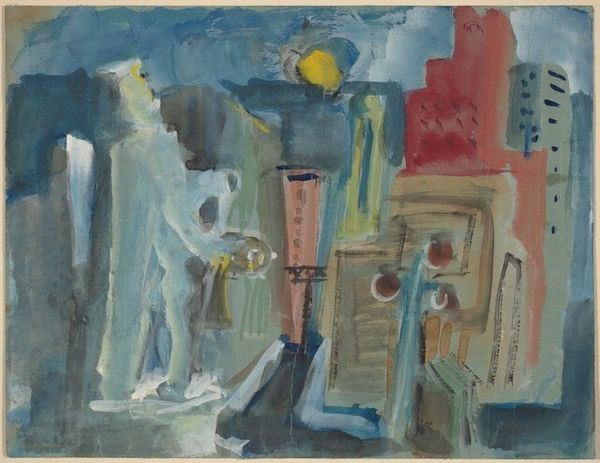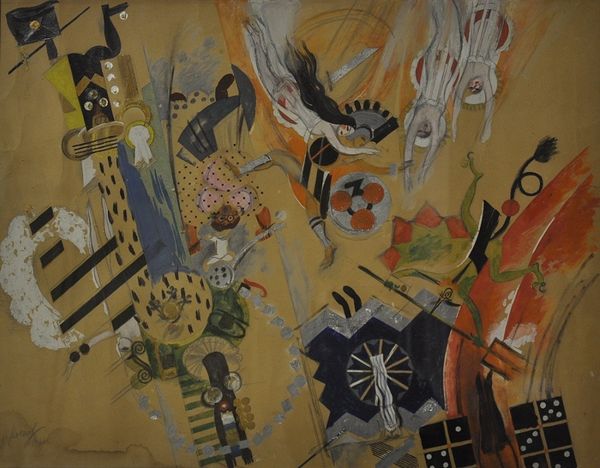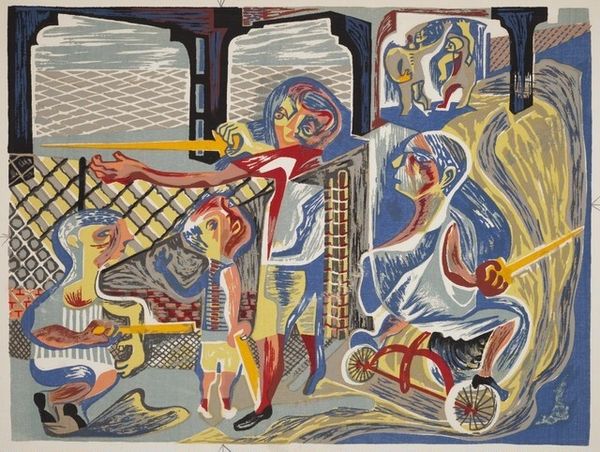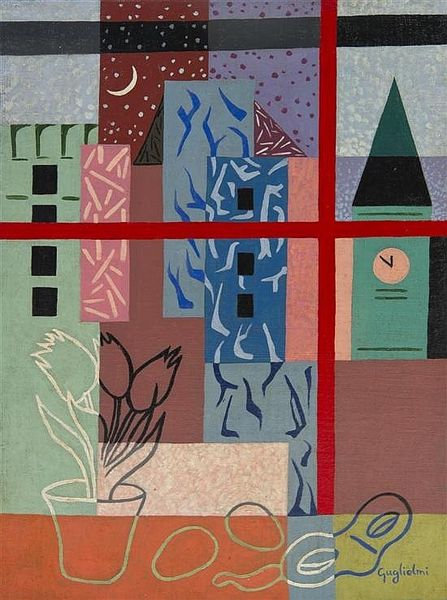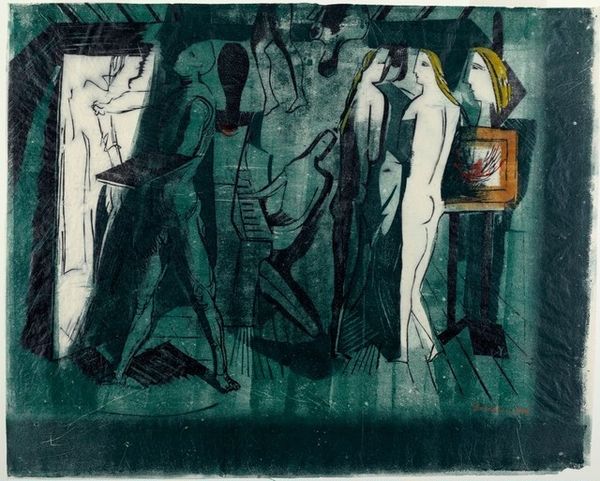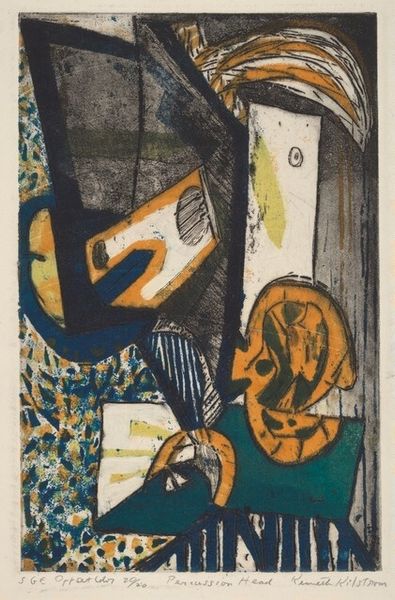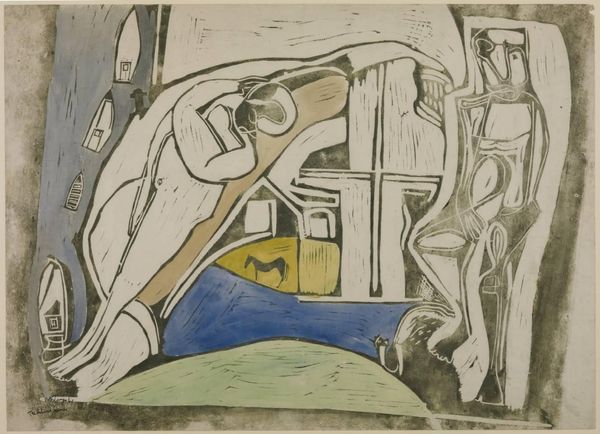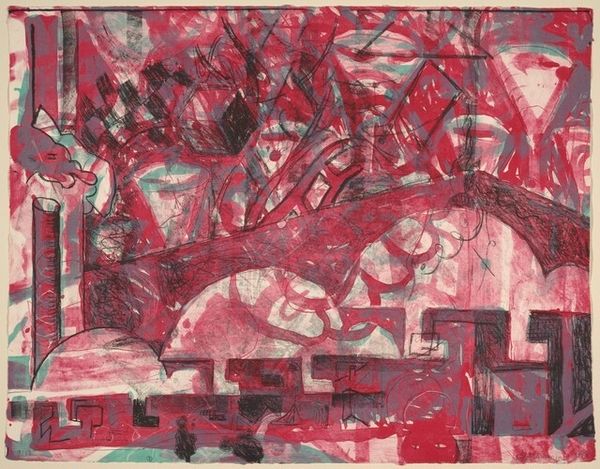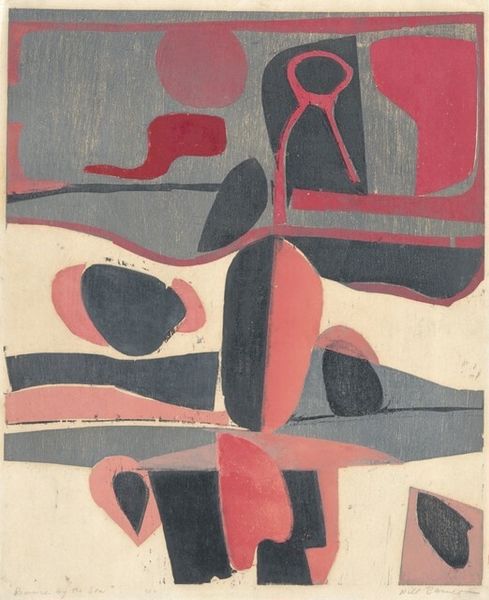
Dimensions: image: 29.21 × 36.51 cm (11 1/2 × 14 3/8 in.) sheet: 33.02 × 43.18 cm (13 × 17 in.)
Copyright: National Gallery of Art: CC0 1.0
Curator: Looking at this striking mixed-media print titled "In a Baroque Garden" by Warrington Colescott from 1952, I’m immediately drawn to the color. Editor: Yes, that red really jumps out against the muted greens and grays! It's quite a bold choice for a garden scene. I'm wondering if the vibrant reds signify something more subversive. Baroque art often masked underlying societal tensions, and Colescott was undoubtedly attuned to post-war anxieties. How might the composition speak to these broader issues of class or power? Curator: Interesting point! Considering that context, the geometric shapes and flattened perspective contribute to a sense of artificiality, a constructed reality. Think of the artifice within Baroque society itself – all gilded surfaces concealing perhaps grim realities. I wonder if this "garden" isn't just a representation of the societal structures in the postwar period? The figures and objects are arranged in such a deliberate, almost stage-like way. The colors—brown, orange, pink, light green—evokes feelings of confinement and pressure; also it brings up questions around the gender dynamics and prescribed social roles, with this being further hinted by the strong use of red throughout the work. Editor: I can see that. While acknowledging your interpretations, I find the tension lies also in the push and pull between abstraction and figuration. Note how he reduces the elements of a garden – the trees, statues – to simplified, almost symbolic forms, with their contours firmly delineated. He really challenges the conventional notions of beauty in garden design by flattening perspectives. Look how shapes are employed: The overlapping forms create an illusion of depth, while the stark lines remind us of the flatness of the printed surface. Do these suggest a broader visual language at play here that isn’t merely mimetic but intellectual? Curator: A point well taken! The print's structure does echo art informel’s experiments, though that movement was in full swing later in the 50s. I am wondering what could happen, though, when we contextualize the subject matter in relation to issues such as, race, class and gender that are visible even if veiled in its composition... I am particularly interested in its commentary about social stratifications in place through these subtle features within. Editor: Yes, these social dynamics and the abstraction work as counterparts which enrich this print. In closing, it's the push and pull between visual experience and sociopolitical content, rather than any resolution, that makes "In a Baroque Garden" such a resonant and thought-provoking work.
Comments
No comments
Be the first to comment and join the conversation on the ultimate creative platform.
